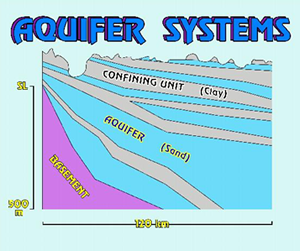Hadnot Point: Chapter B Factsheet
Background
U.S. Marine Corps Base Camp Lejeune, North Carolina was established in 1942. In 1982, the Marine Corps discovered specific volatile organic compounds (VOCs) in the drinking water provided by two of the eight water treatment plants on base.
Using Research to Understand Health Effects
ATSDR is conducting water modeling to better understand how contaminants may have flowed in the groundwater underneath Camp Lejeune. Water modeling is a scientific method that will help ATSDR estimate water-system conditions before March 1987. Water modeling will help identify where and when certain areas at Camp Lejeune received VOC-contaminated drinking water. This will help in understanding who was exposed to contaminants and at what level they were exposed.
ATSDR is preparing a report series summarizing the results of the water modeling of the Hadnot Point and Holcomb Boulevard water systems. Chapter B is part of this report. Using borehole and well data, Chapter B describes the aquifer systems beneath the Holcomb Boulevard and Hadnot Point areas of Camp Lejeune. Understanding how this system works helps scientists create a water model.
 External Link Icon[JPG]
External Link Icon[JPG]Example of aquifer and confining units,United States Geological Survey http://woodshole.er.usgs.gov/epubs/bolide/images/aquifers.jpg
Chapter B describes the size and shape of 14 aquifers and confining units.
Aquifers are permeable rocks that can yield water to wells or springs.
Confining units are less permeable than aquifers and occur above or below an aquifer. Confining units slow down groundwater flow but may transmit water to aquifers.
Authors examined data from when the wells in the area were drilled and listed what materials each section is made of, such as sand, rock, or clay, and how easily water can pass through each material.
Next Steps
Knowing these facts, and drawing this “picture” of the underground water system will help scientists create a water model to estimate how contaminated water might have flowed through these aquifers, to wells, and then to water systems at Camp Lejeune. This information will help ATSDR finish its ongoing epidemiological studies about health at Camp Lejeune.